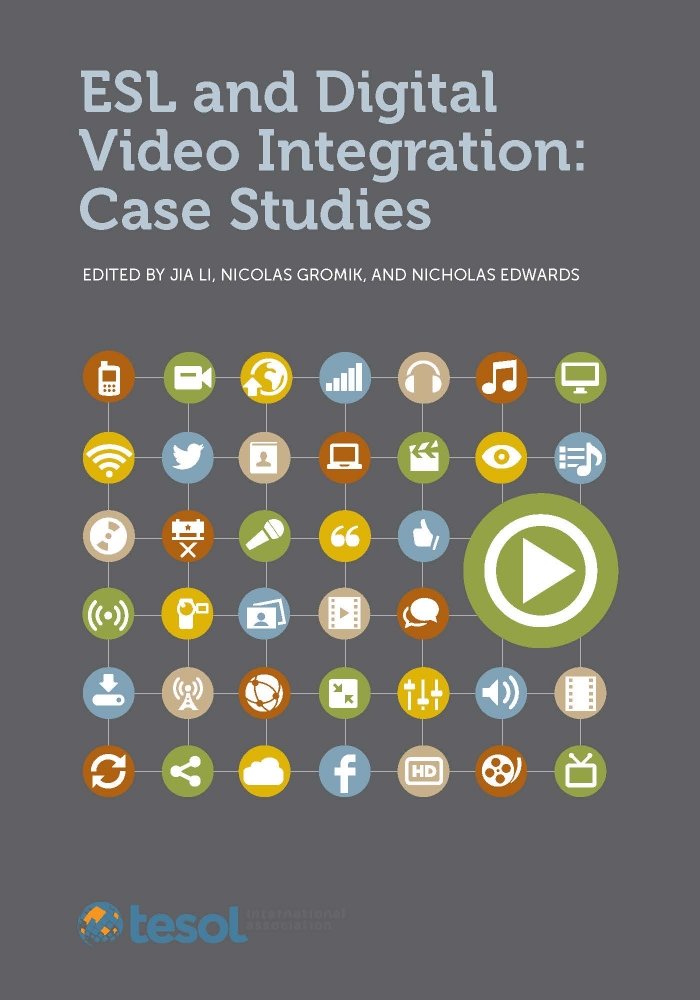Free Book Chapter From "Input-Based Incremental Vocabulary Instruction"
by Joe Barcroft
Chapter 3
Checklist for Designing and Implementing Vocabulary Lessons
This chapter presents a checklist for designing and implementing effective vocabulary instruction lessons. The checklist, which appears in Figure 3.1, can be copied and used on a repeated basis as needed. It provides instructors with a good way to make sure that they are not forgetting any of the key elements of the input-based incremental (IBI) approach as they work to design and implement effective second language (L2) vocabulary lessons.
The rest of this chapter discusses the rationale for attending to each of the seven items in the checklist. At the end of the chapter, I demonstrate how the checklist can be helpful when attempting to design effective English L2 vocabulary lessons, including assessing the extent to which a lesson conforms to the IBI principles discussed in Chapter 2 and the seven-item checklist discussed in this chapter.
1. I decided on target vocabulary and materials needed for the activities
When defining the target vocabulary, each word and lexical phrase may be defined clearly from the start. Other vocabulary may arise as the various activities in the lesson are implemented, but it is good to have a clear idea of the minimum set of target vocabulary. If an instructor is working with a list of vocabulary from a textbook, that list can be used. As described in Chapter 1, numerous online sources are also available for selecting target vocabulary.
With regard to materials, it should be clear from the description of the various steps in the lesson what materials will be needed to implement the lesson. Keeping Principle 4 in mind, there is a wide variety of ways to present target vocabulary so that its meaning is comprehended. Instructors can use resources such as realia (real-world items), computer presentation programs with pictures, a picture file with pictures on cards, flash cards with target words and definitions (in a variety of different formats), videos, maps, among others. Prerecorded spoken input also can be used in the classroom along with other materials. Instructors can be as creative as they wish in their use of various materials to support the lesson.
2. I designed the activities to be meaningful, educational, and interactive
The second and third guidelines suggest making the activities meaningful, educational, and interactive and including cultural and historical information when appropriate. Not every language learning activity need focus extensively on cultural or historical information, but IBI vocabulary lessons lend themselves well to incorporating such information and, by their nature, consistently involve the interpretation and negotiation of meaning. Even if an activity within a lesson involves defining target words or showing pictures that represent them, this activity is still inherently meaningful because it provides learners with an opportunity to make new form–meaning connections....
TESOL Blogs
Interested in writing a blog for TESOL?
Contact
Tomiko Breland with your idea or for details.
Check out the latest TESOL Blogs:
|
TESOL and the CCSS: Let’s Not Give Up, by Rosa Aronson
 Recently, the media have reported a mounting chorus against the U.S. Common Core State Standards (CCSS). Opponents of the CCSS state that the initiative is an intrusion of the Federal Government into local authority, that it’s really an attempt to impose a national curriculum, and that it simply costs too much to implement. Recently, the media have reported a mounting chorus against the U.S. Common Core State Standards (CCSS). Opponents of the CCSS state that the initiative is an intrusion of the Federal Government into local authority, that it’s really an attempt to impose a national curriculum, and that it simply costs too much to implement.
Personally, I find it hard to buy into many of these arguments because they are built on inaccuracies. Read More. |
|
Online Dictionaries for English Learners, by Tara Arntsen
 While I do not know how popular online dictionaries are with teachers and students, I have noticed that my own students often rely on translators to help them with new vocabulary. Translators definitely serve a purpose and students perceive them as the best resource for learning new words because they can see the new word in both their native language and English. Unfortunately, translators are not all created equally and I have seen some rather odd translations, so I recommend that my students, especially at the higher levels, use online dictionaries to help them. Here I’ll talk about some of the online dictionaries I have found, but it is by no means a comprehensive list. Read More. While I do not know how popular online dictionaries are with teachers and students, I have noticed that my own students often rely on translators to help them with new vocabulary. Translators definitely serve a purpose and students perceive them as the best resource for learning new words because they can see the new word in both their native language and English. Unfortunately, translators are not all created equally and I have seen some rather odd translations, so I recommend that my students, especially at the higher levels, use online dictionaries to help them. Here I’ll talk about some of the online dictionaries I have found, but it is by no means a comprehensive list. Read More.
|
|
Check It Out! Resources for Adult ELLs at the Library, by Alexandra Lowe
 For well over a century, American public libraries have offered a gateway to immigrants learning English. In some cities, free library-based ESL classes are so over-subscribed that lotteries are held to determine who gets in. Countless additional ELLs participate in library-based conversation groups. For well over a century, American public libraries have offered a gateway to immigrants learning English. In some cities, free library-based ESL classes are so over-subscribed that lotteries are held to determine who gets in. Countless additional ELLs participate in library-based conversation groups.
Yet, remarkably, many ELLs who take English classes elsewhere in the U.S. are unaware of what a treasure trove awaits them at their local public library. And thanks to the Internet, certain of the public libraries’ resources may even be accessible well beyond America’s shores to students studying English around the world. Here, in a nutshell, are some of the ways in which I introduce my adult ESL students to what their local public library has to offer: Read More. |
|
“Simplicity is the Ultimate Sophistication,” by Elena Shvidko
 “Simplicity is the Ultimate Sophistication”, a quote from Leonardo da Vinci, for me refers to the simplicity of language, which I would like to reflect on in today’s blog entry. I’ll start with a personal experience. When I was working on my master’s thesis a couple of years ago, I remember the feedback that I received from my academic advisor after he handed back to me the first several pages of my first draft. The word that he used sounded almost hurtful at that moment. He said that the language of my writing was not “crisp”! And then he added, “Less is more.” “Simplicity is the Ultimate Sophistication”, a quote from Leonardo da Vinci, for me refers to the simplicity of language, which I would like to reflect on in today’s blog entry. I’ll start with a personal experience. When I was working on my master’s thesis a couple of years ago, I remember the feedback that I received from my academic advisor after he handed back to me the first several pages of my first draft. The word that he used sounded almost hurtful at that moment. He said that the language of my writing was not “crisp”! And then he added, “Less is more.”
At that moment, I was not quite sure if I understood what the expression “less is more meant,” as I believed that my thesis was supposed to be written in academic language, which, according to me, entailed complicated syntactic structures and long words. Read More. |
TESOL Bookstore

Looking for Projects to Engage Students and Have Fun?
Incorporate Video!
 ESL and Digital Video Integration: Case Studies
ESL and Digital Video Integration: Case Studies
Edited by Jia Li, Nicolas Gromik, and Nicholas Edwards
It should come as no surprise that digital video technology is of particular interest to English language learners; students are drawn to its visual appeal and vibrant creative potential. The seven original case studies in this book demonstrate how video can be an effective and powerful tool to create fluid, fun, interactive, and collaborative learning environments.
Read a free chapter.
Order today from TESOL Press